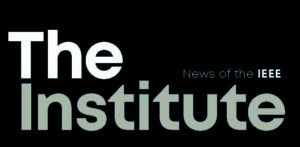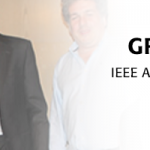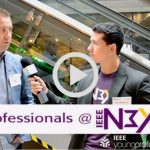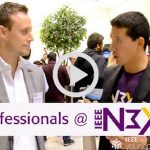Q&A: Brian Gerkey and Wendy Tan White on Intrinsic, Open Robotics, and ROS
Today’s announcement of the acquisition of the Open Source Robotics Corporation by Intrinsic has generated a lot of questions, and no small amount of uncertainty about how this will affect the future of ROS. We have a bunch more information in this article, and there are also three blog posts you can take a look at: one from Open Robotics, one from Intrinsic, and one on ROS Discourse.
Earlier this week, we were able to speak with Brian Gerkey, co-founder and CEO of Open Robotics, alongside Wendy Tan White, CEO of Intrinsic, to ask them about the importance of this partnership and how it’s going to change things for the ROS community.
IEEE Spectrum: Why is Intrinsic acquiring OSRC?
Brian Gerkey: Things are really different from how they were 10 years ago, when we started OSRF. At that time, we were just starting to see companies coming onto the scene and rolling out robots in a serious way, but now, the robotics industry has really taken off. Which is a great thing—but that’s also meant that we here at Open Robotics, with our small independent team, have been feeling the pressure. We’re trying to support this really broad community, and that has become increasingly difficult for us to do as a small company with limited resources. And so, we were really excited by the opportunity to team up with Intrinsic as a partner who is philosophically aligned with us, and who is going to support us as we continue doing this open source work while also building some industry-hardened ROS solutions on top.
Wendy Tan White: When Brian talks about common alignment, our whole mission at Intrinsic is about democratizing robotics. The demand is there now, but access is still limited. It’s still very much either the preserve of researchers, or of heavy industry that’s been using robots in the same way for the last 30 years. As an example, when you wanted to build a website in the old days, you’d have to build your own servers, your own middleware, and your own front end. But now, you can knock up a website tomorrow and add commerce and actually be running a business. That kind of access isn’t there yet for robotics, and I feel like the world needs that. To me, what Brian has done with the ROS community is to try to lift that, and I think that if we join forces, we can lift everyone together.
Open Robotics’ model has been to remain independent while helping other companies do what they want to do with ROS. Why acquire Open Robotics as opposed to continuing that relationship?
White: If you think about a model like Linux and Red Hat, Red Hat became almost like a commercial or industrialized arm of Linux. That commercialization and hardening around Red Hat meant that industry was willing to commit to it more broadly, and what Brian was finding at Open Robotics is that he was starting to get that pull to build to that level, and then ended up building loads of customized things on top of ROS when really what was needed was a more industrialized platform. But he didn’t want to force the ROS community into that alone. So, the way that we see this is that we’d be more like the Red Hat to the Linux of OSRF. And we’re actually going to carry on investing in OSRF, to give it more stability. I don’t think Brian would have wanted to do this unless he felt like OSRF was going to stay independent.
Gerkey: Yes, absolutely. And I think one thing to keep in mind is that in terms of how open source communities are typically structured, the way that Open Robotics has done it for the last 10 years has been the exception. The situation where the foundation has not just a responsibility for governance and organization, but also happens to employ (directly or indirectly) the core developer team, is a very uncommon situation. Much more common is what we’re going to end up with on the other side of this week, which is that the foundation is a relatively small focused entity that does all of the non-code development activities, while the people who are developing the code are at companies like Intrinsic (but not only Intrinsic) where they’re building products and services on top.
And in terms of my own motivation here, I’ve been doing open source robot software since the late 1990s, even before ROS. I’ve built a career out of this. I wouldn’t go into this transition if I didn’t completely believe it was going to be good for that mission that I’ve committed myself to, personally and professionally. I am highly confident that this is going to be a very good move for the community, for the platform, for our team, and I think we’re going to build great things with Intrinsic.
“If you think about a model like Linux and Red Hat, Red Hat became almost like a commercial or industrialized arm of Linux … So, the way that we see this is that we’d be more like the Red Hat to the Linux of OSRF.” —Wendy Tan White
There are many other companies who contribute substantially to ROS, and who understand the value of the ROS ecosystem. Why is Intrinsic the right choice for Open Robotics?
Gerkey: We thought hard about this. When our leadership team recognized the situation we talked about earlier—where the demands on us from the robotics community were getting to the point where we were not going to be able to do justice to this whole community that we were responsible for supporting on our own—we decided that the best way for us to be able to do that would be to join with a larger partner. We went through a lengthy strategic process and considered lots and lots of partners. I approached Stefan Schaal [Chief Science Officer at Intrinsic], who was actually on my thesis proposal committee at USC 20 years ago, thinking that somewhere within the Alphabet universe there might be a good home for us. And I was honestly surprised as Stefan told me more about what Intrinsic was doing, and about their vision to (as Wendy puts it) democratize access to robotics by building a software platform that makes robotic applications easier to develop, deploy, and maintain. That sounded a whole lot like what we’re trying to do, and it was clear pretty quickly that Intrinsic was the right match.
What is Intrinsic actually acquiring?
Gerkey: The OSRC and OSRC Singapore teams will be joining Intrinsic as part of the transaction. But what’s not going is important: ROS, Gazebo, ROSCon, TurtleBot—the ownership of the trademarks, the domain names, the management of the websites, the operations of all those things, all of that remains with OSRF. And that gets back to what I was talking about earlier: that’s the traditional role for a non-profit foundation, as a steward of an open source community.
Can you tell us how much the acquisition is for?
White: We can’t talk about the amount. But I really felt that it was fair value, and it’s in our best interest to make sure that the team is happy and that OSRF is happy through this process.
How many people will be working at OSRF after the acquisition?
Gerkey: Vanessa Yamzon Orsi is going to step up and take over as CEO. Geoffrey Biggs will step up as CTO. We’re going to have some additional outside engineers to help with running some of the infrastructure. And then from there, we’ll assess and see how big OSRF needs to be. So it’s going to be a much smaller organization, but that’s on purpose, and it’s doable because it’s no longer operating the consulting business that Open Robotics has historically been known for.
How much of the core ROS code is currently being generated and maintained by the community, and how much is being generated and maintained by the team that has been acquired by Intrinsic? How has that been changing over time?
Gerkey: Our team certainly spends more of our time on the core of ROS than other organizations tend to, and that’s in part because of that legacy of expertise that started at Willow Garage. It’s also because historically, that’s been the hardest part of the ecosystem to get external contributions to. When people start using ROS and want to contribute something, they’re much more likely to want to contribute a new thing, like a driver for a new sensor, or a new algorithm, and it’s harder to get volunteers to contribute to the core. Having said that, one of the developments over the last couple of years is that we introduced the ROS 2 technical steering committee, and that has brought in core contributions from folks like Bosch and iRobot.
“OSRC teams will be joining Intrinsic as part of the transaction. But what’s not going is important: ROS, Gazebo, ROSCon, TurtleBot—the ownership of the trademarks, the domain names, the management of the websites, the operations of all those things, all of that remains with OSRF.” —Brian Gerkey
But should we be concerned that many of the folks who have been making core ROS contributions at Open Robotics since Willow will now be moving to Intrinsic, where their focus may be different?
Gerkey: That’s a totally fair question. These are people who are well known within the community for the work that they’ve done. But I think that should be one of the most encouraging things for folks who are hearing this news: the reason these people are known is that they’ve established a track record of good action within the community. They’ve spent years and years making open source contributions. And what I would ask of the community is to give them the benefit of the doubt, that they’re going to continue doing that. That’s what they’ve always done, and that’s what we intend to keep doing.
 White: I think that’s the reason Brian chose us rather than the other partners he could have been with—because Intrinsic will provide that space and latitude. Why? Because it’s actually symbiotic. I’ve never seen a step change in any industry with open source unless those relationships are symbiotic. And Alphabet has a good track record of honoring that too, and striking that balance of understanding.
White: I think that’s the reason Brian chose us rather than the other partners he could have been with—because Intrinsic will provide that space and latitude. Why? Because it’s actually symbiotic. I’ve never seen a step change in any industry with open source unless those relationships are symbiotic. And Alphabet has a good track record of honoring that too, and striking that balance of understanding.
I’m a believer that actions and evidence speak for themselves better than me giving you some bullshit story about how it’s going to be. I hope you will hold us to it.
Broadly speaking, how close do you think the alignment is between Intrinsic’s goals as an independent company, and the goal of supporting core ROS functionality and contributing to the ROS community?
White: I think it’s very close to where Brian was trying to take the whole of Open Robotics anyway. If you grow a set of libraries and tooling organically through a community, the problem you’ve got is that for it to reach the industrial quality that businesses want, it really will take something like Intrinsic and Alphabet to make that happen. The incumbent industry suppliers have no interest in shifting to that model. The startups do, but they’re finding it really hard to break into old industry. We’re able to bridge the two, and I think that’s the difference.
Brian, you say in one of the blog posts that being part of Intrinsic is a “big opportunity” that will have “long-term benefits” for the ROS community.” Can you elaborate on that?
Gerkey: At a high level, the real advantage is going to be that there will be more sustained investment in the core platform that people have always wanted us to improve. Given the way Open Robotics operated historically, that was always a thing that we tended to do in the margins. Rarely did a customer come to us and say, “we’d like this item from your technical roadmap implemented for the next version.” It was much more like, “here’s what we need to make our application work tomorrow.” And so we’ve always had a limited ability to make the longer range investments in the platform, and so we’re going to be in a much better position to do that with Intrinsic.
To be more specific, if you look at Intrinsic’s near-term focus in industrial manufacturing, I think we can expect to see some really great synergies with the ROS Industrial community. Intrinsic has internally developed some tools and algorithms that I think would be interesting and there are discussions about how to make those contributions. So, somewhere between better and more consistent involvement in the core platform and specific improvements in industrial use cases are probably what people should look for in the near term.
“How is the community going to react? … There are certainly going to be people in the community who are not convinced; there are going to be folks out there who react negatively to this. And it’s going to be on us to bring them around over time.” —Brian Gerkey
What was your biggest concern about this partnership, and how did you resolve that concern?
Gerkey: It’s a coin toss for me between “what is my team going to think about this,” and “what is the community going to think about this.” Those were my two biggest concerns. And not because this is a bad or borderline thing and I’m going to have to convince people about some shady deal, but just more like, this is a big surprise. This has been consistently the theme as we’ve disclosed things to members of our team: the first reaction is, “what?!” Before they can even get to deciding if it’s good or bad, it’s just really different from what they expected. But then we tell them about it, and they can see it as a great opportunity, which has helped me feel better about it.
And then how is the community going to react? I mean, we’re going to find out this week. I’d say that we’ve done everything we can in good faith to structure the deal and make plans so that we are acting in the best interests of the community. We have the backing of the current OSRF to do this, and that’s a big endorsement. There are certainly going to be people in the community who are not convinced; there are going to be folks out there who react negatively to this. And it’s going to be on us to bring them around over time. We can only do that through action, we can’t do that through promises.
White: My greatest concern has been about the community. As Brian said, we sort of tested it out with a couple of folks, and even though there’s surprise, there’s normally also genuine excitement and curiosity. But there’s also some skepticism. And my own experience with dev communities around that, is that the only way to prove ourselves is to do it together.






